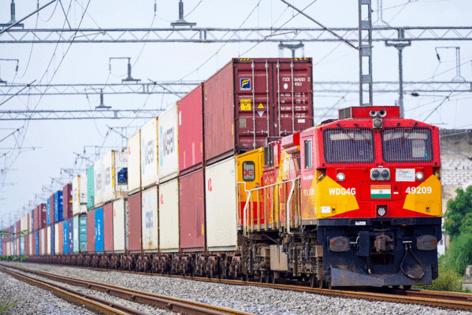US tariffs rattle Indian exporters, fueling calls for support
Published in News & Features
Indian exporters hit by President Donald Trump’s 50% tariff say they can’t survive without government support, as calls for relief grow.
The tariffs — which took effect Wednesday in Washington — doubled the previous 25% duty and are now among the highest in Asia, leaving Indian goods uncompetitive in the U.S. market. Industry groups are pushing for stimulus that includes cheaper loans, wage subsidies and tax breaks to soften the blow.
Without such relief, they warn, production will stall, workers could be laid off and India risks ceding its hard-won market share to rivals.
“Those with 100% exports to the U.S. markets have laid off labors in a big way,” said S C Ralhan, President of the Federation of Indian Export Organisations. “The government needs to come to our rescue immediately.”
The U.S. is India’s biggest export destination. In 2024, the South Asian nation sent $87.4 billion worth of goods there, about a fifth of the country’s total merchandise exports in the year through March 2025.
Buyers are already shifting orders to Bangladesh, Vietnam and Cambodia, where tariffs hover around 20%, according to Israr Ahmed, managing director of Farida Shoes Pvt. He estimates footwear exports to America could plunge as much as 90% this year.
For U.S. companies trying to keep costs down, India’s new price disadvantage is simply too steep. “50% tariffs are not workable for the clients,” Ahmed said, adding that buyers have already asked Indian exporters to hand over product specifications to alternative suppliers in Southeast Asia.
Apparel makers are estimating a hit of about $3 billion, according to Sudhir Sekhri, chairman of the Apparel Export Promotion Council. To cope, Indian firms are ramping up production in overseas facilities like Bangladesh and Cambodia, shifting work abroad to keep customers while avoiding the steep tariffs.
Trump’s move marks a sharp deterioration in ties for the two nations and an about-turn in Washington’s strategy over the years to court India as a counterweight to China. Trump has slammed India for buying Russian oil, which he said was funding President Vladimir Putin’s war in Ukraine. New Delhi has defended its ties with Russia and has called Washington’s actions “unfair, unjustified and unreasonable.”
The levies will hit more than 55% of goods shipped to the U.S. and hurt labor-intensive industries like textiles and jewelry the most. Key exports like electronics and pharmaceuticals are exempt, sparing Apple Inc.’s massive new factory investments in India for now.
Even if the government rolls out a stimulus package, it would only provide short-term relief. The bigger problem is that Indian exporters built their growth plans around the U.S., seen as a fast-growing, lucrative market. With those assumptions now upended and companies shifting production abroad, India’s own manufacturing base risks being hollowed out.
Officials in New Delhi are finding ways to support exporters. Top officials from the Prime Minister’s Office, along with the commerce and finance ministries, would meet Tuesday to discuss possible measures, including lower-interest loans and help with accessing new markets, Bloomberg previously reported.
Reserve Bank of India Governor Sanjay Malhotra said Monday that the tariffs are likely to have only a limited impact on the economy. The central bank remains on an easing cycle to support growth, including in industries affected by the tariffs, he added.
Ajay Sahai, director general of the FIEO, warned that industries including textiles, leather, handicrafts, carpets, toys, marine products, chemicals and plastics will be significantly impacted. Exporters are already scouting for alternative markets, with a shift expected over the medium term, he said.
In the short term, though, cash flow remains the most pressing concern and easing liquidity for companies should be the government’s top priority, Sahai said. India has more than 200,000 exporters, and about 80,000 of them depend on the U.S. market, he added.
What Bloomberg economics says...
New Delhi is likely to stay engaged with the U.S. while prioritizing strategic autonomy — preserving energy and defense ties with Moscow, as well as diversifying partnerships through FTAs with the E.U., New Zealand, Oman and others.
Improving ties with China may bring more investment in electronics, clean tech and other non-strategic sectors, but security frictions and regional rivalry make a deeper partnership unlikely.
— Abhishek Gupta, Bloomberg Economist.
©2025 Bloomberg L.P. Visit bloomberg.com. Distributed by Tribune Content Agency, LLC.







Comments